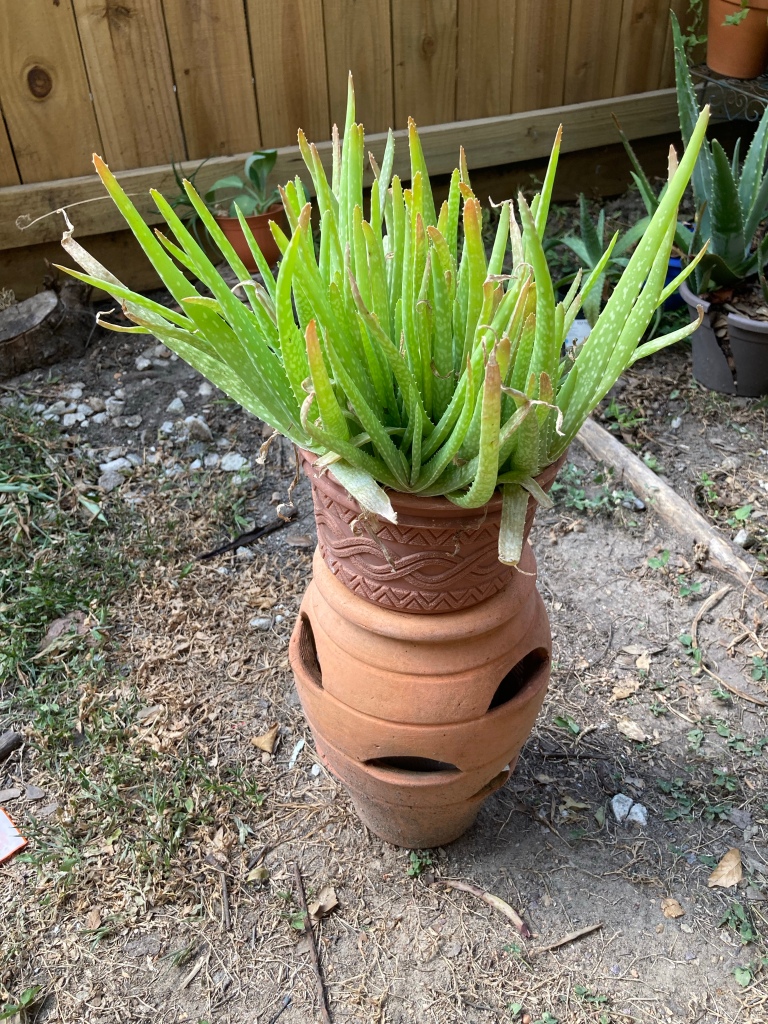
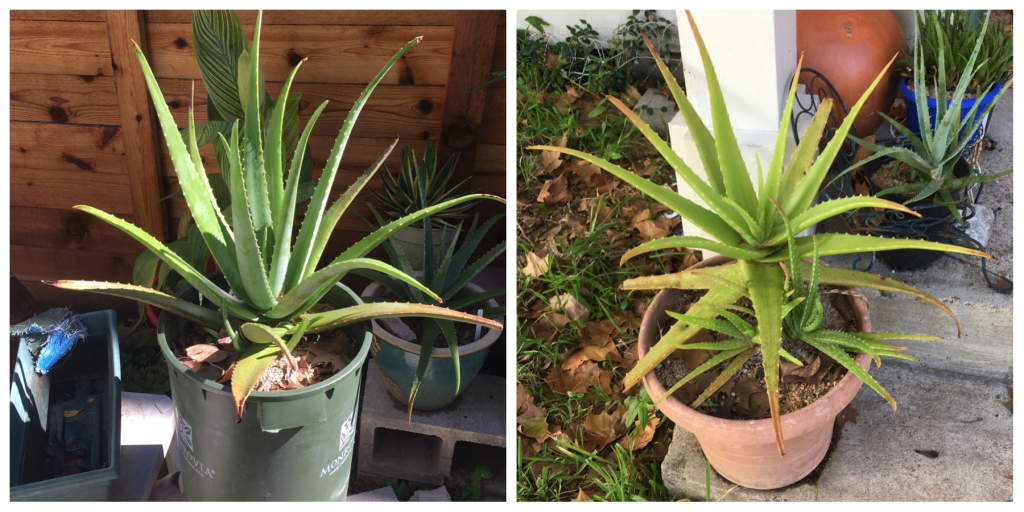

Aloe vera var. chinensis is probably even more common than real Aloe vera, likely due to how prolific it is. Often when you say Aloe vera, this is the plant a lot of people think of. It is definitely not Aloe vera…what it really is isn’t known for sure, but it’s thought to be either a vera hybrid or different species like Aloe officinalis or Aloe massawana by most collectors.
Some people will call this the “female” Aloe vera because of how many offsets it produces, some will say this orange blooming plant is Aloe vera while the yellow blooming plant is Aloe barbadensis (or vice versa..just more confusing misinformation!) Aloe plants are NOT either male or female, and Aloe vera and Aloe barbadensis are the same plant. Aloe barbadensis is the old accepted name, and Aloe vera doesn’t really need anything extra added to it to differentiate it if you stick to the basics. Lots of places will call it Aloe vera barbadensis or even Aloe vera barbadensis var. miller…which gives me a headache (Miller is the name of the person who described it as barbadensis, not a variety!) It’s just Aloe vera. When you look up a species often the name of the person who described it will be included at the end in some fashion, and some people have seen “Miller” at the end of Aloe barbadensis and decided that’s the variety name I guess.
Anyway, Aloe vera var. chinensis isn’t really an accepted name, but since no one has really figured out what it is for sure, that name has stuck. In the book Aloes: The Definitive Guide (Carter, Lavranos, Newton, Walker), they suggest this variety is really Aloe officinalis…other growers think it may be Aloe massawana, and there are some that think it could be a vera hybrid. No one can really agree, so I just stick with the “chinensis” name since that is the most well known. I can see it possibly being one of the other suggested species, or maybe a vera hybrid, but I don’t think it’s a variety or subspecies of vera…I’ll let the experts figure that out though, since that’s a little beyond me 🤷♀️ I have linked other sources at the bottom where they talk more about what this variety may really be, and the history of it (as well as a post I made when I cleaned up several inherited and overgrown/etiolated pots of chinensis.)

This variety is generally a brighter green, doesn’t really have the dusty farina vera has, keeps its spots longer, is a little smaller growing, and as I mentioned before, very prolific. If you buy one, you will soon have at least 20! Blooms can sometimes be needed for an accurate ID, I’ve seen photos of plants that for sure looked like “true” vera, but had the less densely packed orange/pink flowers like “chinensis” or one of the other species that are similar. Aloe vera blooms are distinct in that they are bright yellow with a bit of green, and densely packed on the bloomstalk. The “chinensis” variety blooms pink or orange and the flowers are usually more spaced out on the bloomstalk.

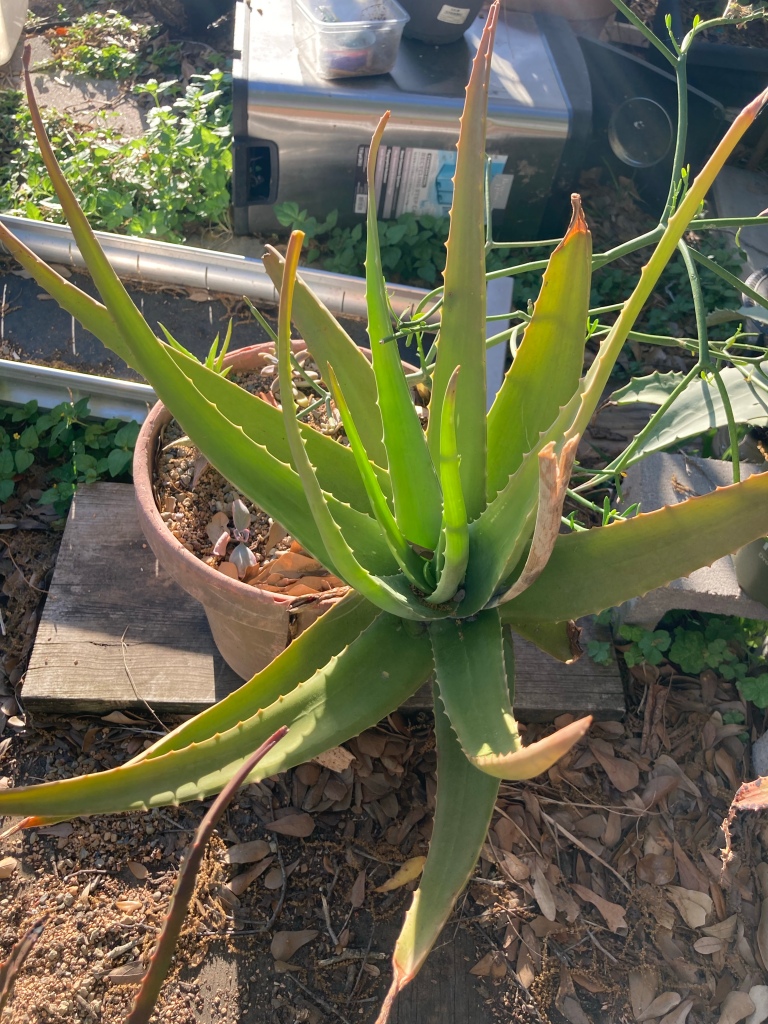

People often think this plant stays in the juvenile fan shaped form…I mean, it often does if you grow it indoors in crowded pots. But it will eventually grow into a rosette if you give it the right conditions!

A few websites that sell cacti and succulents sell a plant they call Aloe vera var. chinensis, but it isn’t. The small Aloe in their photos is a smooth form of Aloe ‘Crosby’ Prolific’. Planet Desert, Mountain Crest and Vivid Root for example are selling ‘Crosby’s Prolific’ as Aloe vera var. chinensis. Just because a reputable shop has a plant labeled with a certain name, doesn’t mean that name is correct.


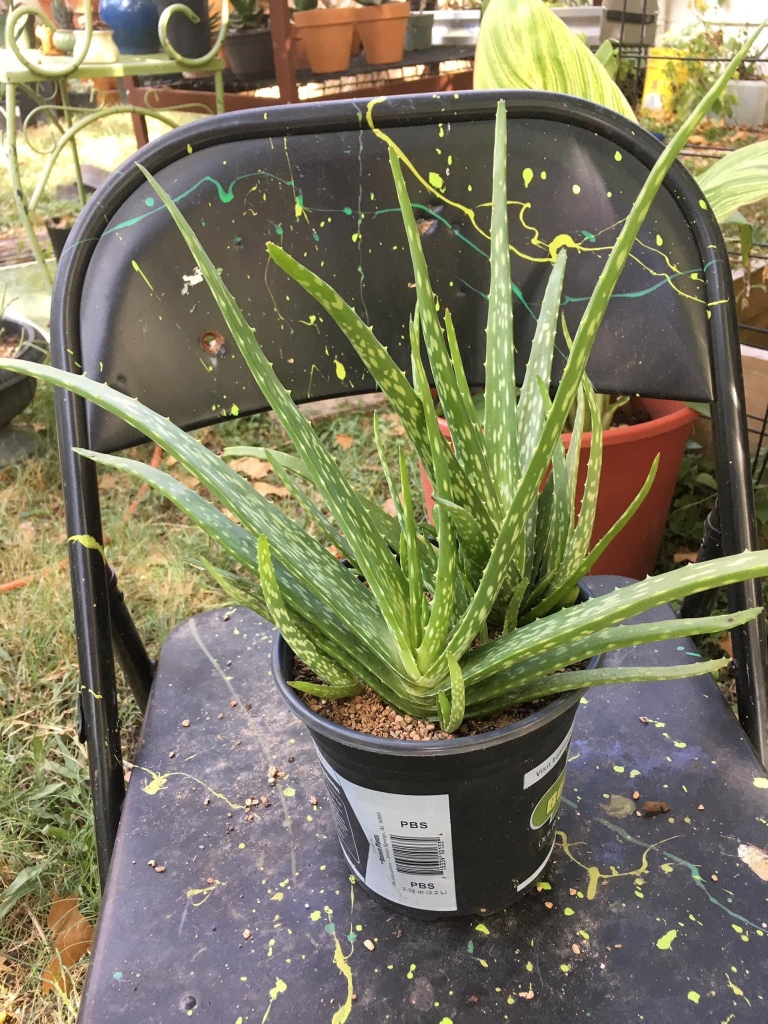

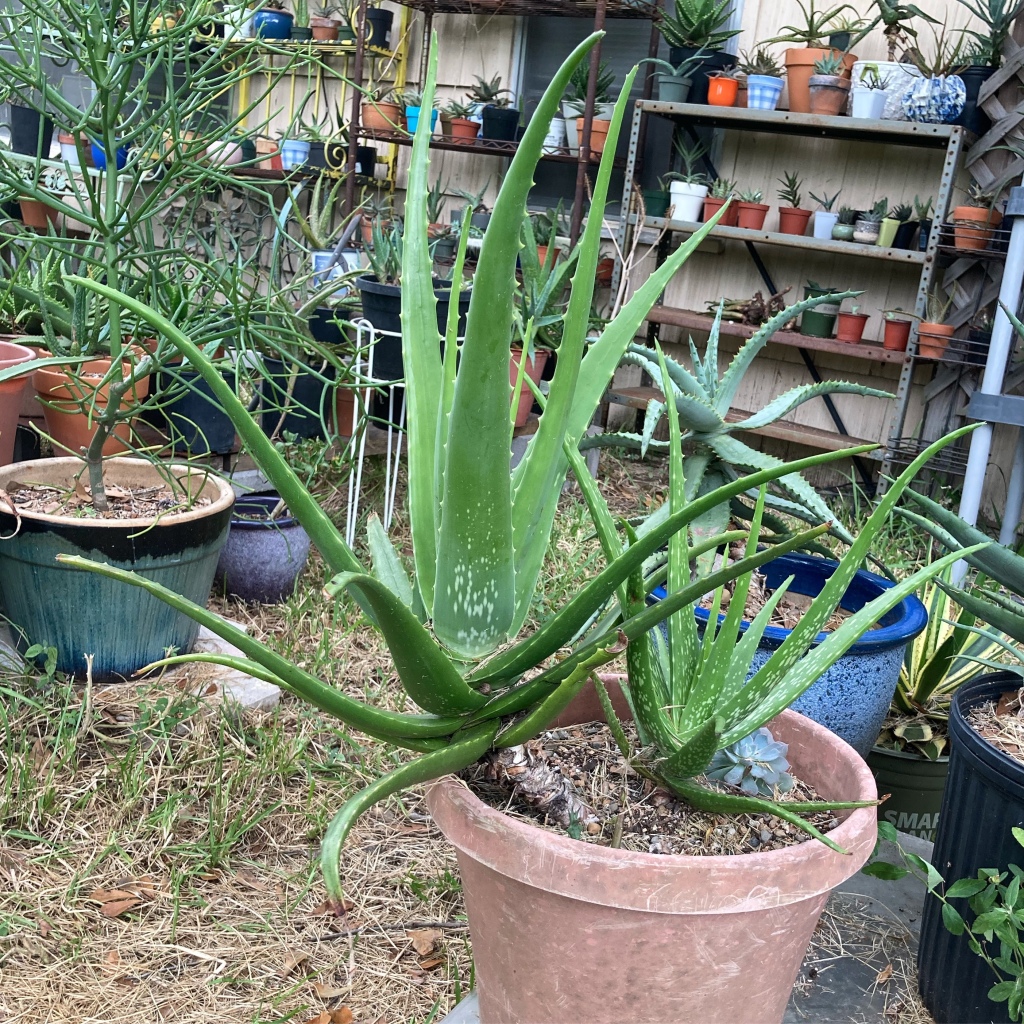














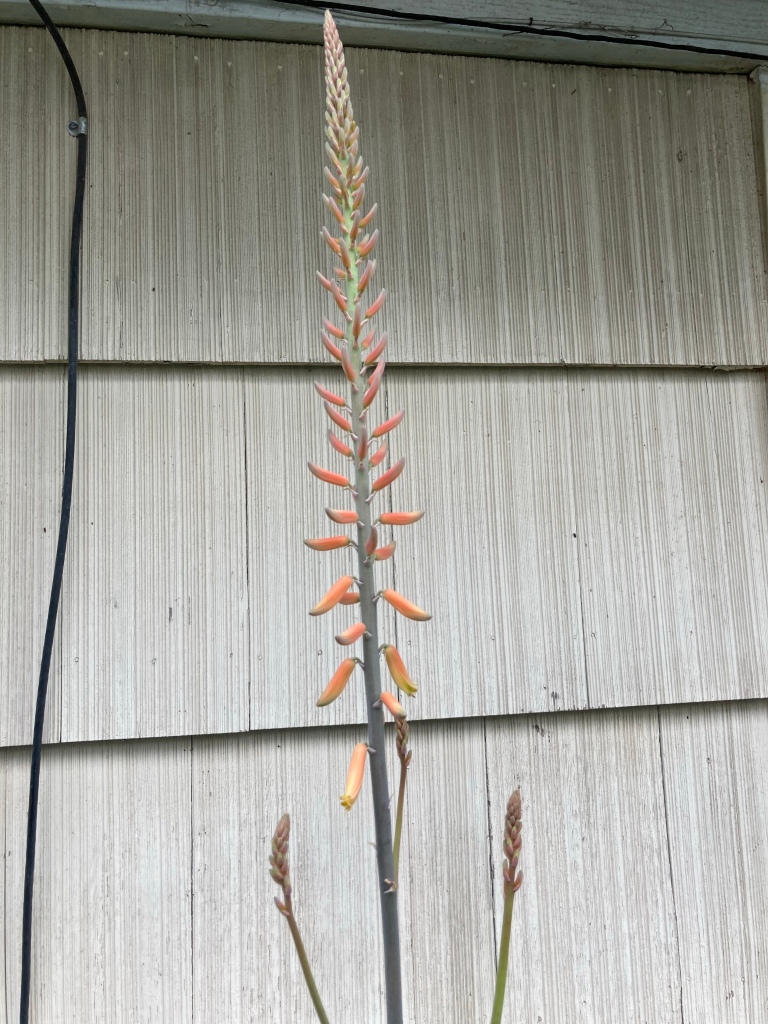

Another thing to note, blooming times – my chinensis plants bloom in late fall/early winter (November-ish) and my vera plants bloom in late winter/early spring (March-ish.) Bloom times may vary depending on where you live, and I’ve even seen people say both their chinensis and vera plants bloom more than once a year. Mine only do once a year. Also growing conditions can change the bloom color…indoors where they don’t get as much light, blooms tend to be more pale. So a bloom from a chinensis plant may actually look more yellow than it would if it were getting a lot of sun. The chinensis variety is more likely to bloom in less than ideal conditions (indoors.) I’ve seen people that grow vera indoors describe their flowers as white (and they posted photos, so they weren’t mixing up plants, I know a lot of people use “Aloe Vera” as a catchall term for many Aloes and their relatives), because being grown indoors the flowers are much more pale.



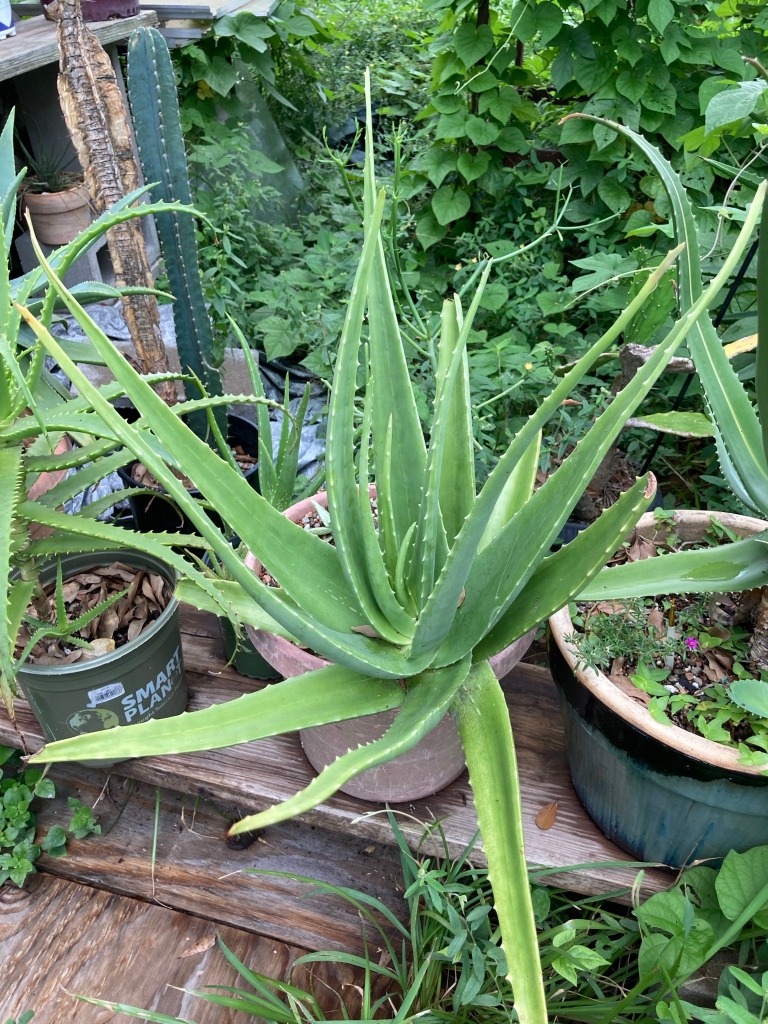

Links for more info –
1. https://www.smgrowers.com/products/plants/plantdisplay.asp?cat_id=10&plant_id=118
2. https://garden.org/thread/view/45942/Spotted-Aloe-veras-misidentified/
3. http://www.huntingtonbotanical.org/Desert/Cholla/feb06/feb06.htm
4. https://aloehoarder.wordpress.com/2021/10/25/aloe-vera-var-chinensis-clean-up/